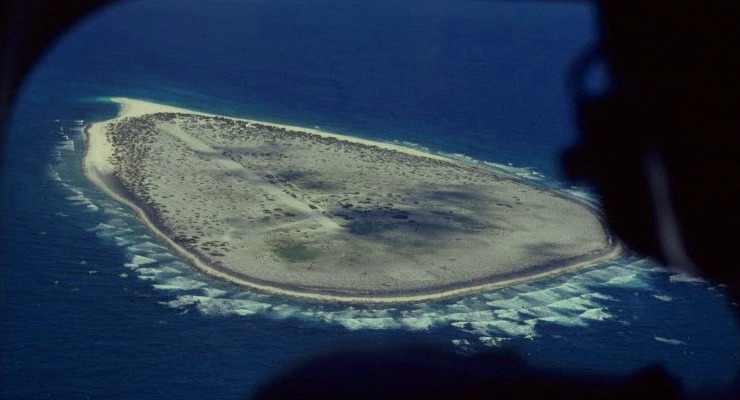216-The Tromelin Island Castaways
Futility Closet
Greg Ross
4.8 • 748 Ratings
🗓️ 10 September 2018
⏱️ 33 minutes
🧾️ Download transcript
Summary

In 1761 a French schooner was shipwrecked in the Indian Ocean, leaving more than 200 people stranded on a tiny island. The crew departed in a makeshift boat, leaving 60 Malagasy slaves to fend for themselves and wait for rescue. In this week's episode of the Futility Closet podcast we'll tell the story of the Tromelin Island castaways, which one observer calls "arguably the most extraordinary story of survival ever documented."
We'll also admire some hardworking cats and puzzle over a racer's death.
Intro:
In 1830 architect Thomas Willson proposed building an enormous pyramid to house London's dead.
In 1959 a Norwegian insulation manufacturer undertook to transport a three-ton block of ice to the equator without refrigeration.
Sources for our feature on the Tromelin Island castaways:
Samir S. Patel, "Castaways," Archaeology, Sept. 15, 2014.
"Lèse humanité," Economist, Dec. 16, 2015.
Max Guérout, "Esclaves oubliés," La Revue Maritime 477 (December 2006).
John Lichfield, "Shipwrecked and Abandoned: The Story of the Slave Crusoes," Independent, Feb. 5, 2007.
James Russell, "The Recovery of Tromelin Island," National Geographic, April 11, 2016.
V. Laroulandie and C. Lefèvre, "The Use of Avian Resources by the Forgotten Slaves of Tromelin Island (Indian Ocean)," International Journal of Osteoarchaeology 24:3 (2014), 407-416.
Matthieu Le Corre, et al. "Seabird Recovery and Vegetation Dynamics After Norway Rat Eradication at Tromelin Island, Western Indian Ocean," Biological Conservation 185 (2015), 85-94.
Nick Marriner et al., "A Geomorphological Reconnaissance of Tromelin Island, Indian Ocean," Journal of Coastal Research 28:6 (November 2012), 1606-1616.
Urko Apaolaza Ávila, "Basques in the Caribbean Slave Trade (Eighteenth and Nineteenth Centuries)," in William A. Douglass, ed., Basques in Cuba, 2016.
Jane Webster, "Slave Ships and Maritime Archaeology: An Overview," International Journal of Historical Archaeology 12:1 (March 2008), 6–19.
Annabelle Georgen, "Abandonnés sur une île déserte: la tragédie des esclaves oubliés de Tromelin," Slate, Feb. 22, 2017.
Peter Mitchell and Paul Lane, The Oxford Handbook of African Archaeology, 2013.
Carl Thompson, Shipwreck in Art and Literature: Images and Interpretations from Antiquity to the Present Day, 2014.
Nelly Schmidt, "Slavery and Its Abolition, French Colonies, Research and Transmission of Knowledge," UNESCO Slave Route Project.
Constance Holden, "Random Samples," Science, New Series 315:5812 (Feb. 2, 2007), 579.
Jasmina Sopova, "UNESCO Launches Forgotten Slaves Programme," UNESCO, April 23, 2004.
"Archaeological Science," Health & Medicine Week, May 17, 2010, 1593.
Sylviane Diouf, "Survivors: Sand Island," New York Public Library, March 7, 2012.
H.A. Moriarty, Islands in the Southern Indian Ocean, Westward of Longitude 80° East, Including Madagascar, 1904.
Alexander G. Findlay, A Directory for the Navigation of the Indian Ocean, 1866.
A. Constable, Shipwrecks and Disasters at Sea, 1812.
Lawrence G. Green, "Mystery Isles of the East," New York Times, June 21, 1931.
Bernie McClenny, "Tromelin Island," QST 98:9 (September 2014), 91-92.
"Foreign Intelligence," [London] General Evening Post, Aug. 21, 1777.
"Extract of a Letter From Amsterdam, Aug. 7," London Chronicle, Aug. 22, 1777.
Listener mail:
"Chief Mouser Palmerston Develops a Taste for Duck," Times, July 24, 2018.
"Library Cat Outlasts Councilman That Wanted Him Gone," CBS News, Dec. 16, 2016.
Bud Kennedy, "Council Critic Takes Yet Another Swipe at Browser the Library Cat," Fort Worth Star-Telegram, Dec. 10, 2016.
Ricki Harris, "Beloved Cat Will Keep His Job at the Local Library After International Backlash," ABC News, July 5, 2016.
Ricki Harris, "Beloved Cat Fired From His Job at a Local Public Library," ABC News, June 28, 2016.
Wikipedia, "Mike (cat)" (accessed Sept. 4, 2018).
E.A. Wallis Budge, "Mike", the Cat Who Assisted in Keeping the Main Gate of the British Museum From February 1909 to January 1929, 1929.
R.B. Shaberman, Mike, the British Museum Cat, 1909-1929: A Jubilee Reminiscence, 1979.
Dog Days of Summer Family Festival, Smithsonian National Postal Museum (accessed Sept. 6, 2018).
This week's lateral thinking puzzle was contributed by listener Bryant Pocock, who sent these corroborating links (warning -- these spoil the puzzle).
You can listen using the player above, download this episode directly, or subscribe on Google Podcasts, on Apple Podcasts, or via the RSS feed at https://futilitycloset.libsyn.com/rss.
Please consider becoming a patron of Futility Closet -- you can choose the amount you want to pledge, and we've set up some rewards to help thank you for your support. You can also make a one-time donation on the Support Us page of the Futility Closet website.
Many thanks to Doug Ross for the music in this episode.
If you have any questions or comments you can reach us at [email protected]. Thanks for listening!
Transcript
Click on a timestamp to play from that location
| 0:00.0 | Welcome to the Futility Closet Podcast, forgotten stories from the pages of history. |
| 0:14.2 | Visit us online to sample more than 10,000 quirky curiosities from a pyramid cemetery to a migrating ice block. |
| 0:21.7 | This is episode 216. I'm Greg Ross. |
| 0:24.4 | And I'm Sharon Ross. In 1761, a French schooner ran aground on a tiny island in the Indian |
| 0:30.9 | ocean. The crew departed in a makeshift boat, leaving 60 slaves to fend for themselves and |
| 0:36.5 | wait for rescue. In today's show, |
| 0:39.0 | we'll tell the story of the Tromlin Island castaways and their extraordinary struggle for survival. |
| 0:44.8 | We'll also admire some hardworking cats and puzzle over a racer's death. |
| 1:01.7 | On the night of July 31st, 1761, a three-masted French schooner called Luteel was sailing from Madagascar to Ilde-de-France in the western Indian Ocean. In the hold were 160 slaves, |
| 1:07.0 | whom the captain had purchased days before. Slavery was legal at that time, and Ilde France needed |
| 1:11.9 | labor, but the captain was not authorized to deal in slaves, and he was anxious to reach his |
| 1:15.9 | destination quickly. As the winds increased to 20 knots, the officers began to worry that their |
| 1:20.8 | situation was dangerous. Somewhere ahead of them was a tiny islet known as Ilde Sable, or sandy |
| 1:26.1 | island. But the ship's charts didn't agree on where it was, |
| 1:29.4 | and it was impossible to see ahead in the stormy, moonless night. Some suggested waiting for daylight, |
| 1:34.6 | but the captain refused and ordered the ship to press on. That was a fatal decision. The ship ran |
| 1:39.7 | a ground on a coral reef, shattering its hull and leaving them foundering 300 miles from Madagascar. |
| 1:45.7 | But as the sky lightened, they saw that the reef surrounded the sandy island. The ship's log |
| 1:50.1 | reads, The Coming of Day and the site of land, which diminished our terrors, reduced none of the |
| 1:54.6 | furies of the sea. Several people threw themselves into the water with a line to try to reach the |
| 1:59.2 | land to no end. A few reached the |
| 2:01.6 | shore. We had to haul some others back over the debris where they drowned. We were terrified all the |
... |
Please login to see the full transcript.
Disclaimer: The podcast and artwork embedded on this page are from Greg Ross, and are the property of its owner and not affiliated with or endorsed by Tapesearch.
Generated transcripts are the property of Greg Ross and are distributed freely under the Fair Use doctrine. Transcripts generated by Tapesearch are not guaranteed to be accurate.
Copyright © Tapesearch 2025.

